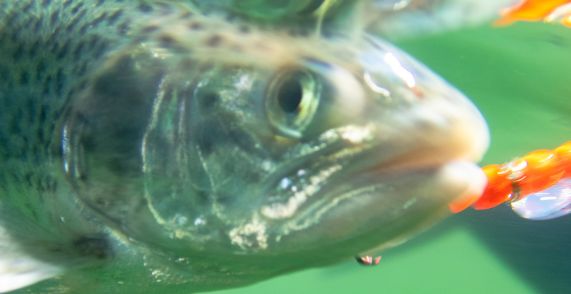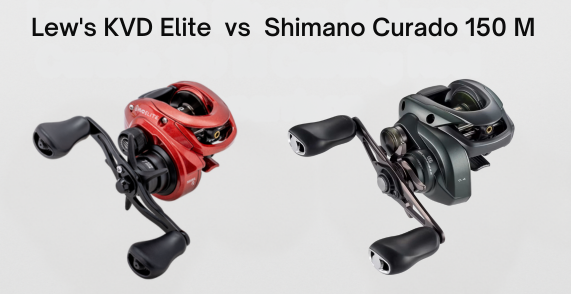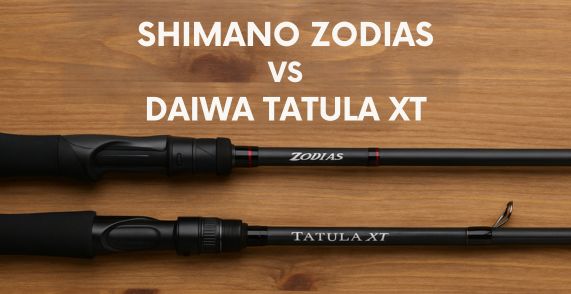In the hushed heart of dawn, as light blisters the edge of the horizon and nature stirs awake, anglers around the globe prepare for an epic duel.
Their opponent?
The elusive trout; a fish prized not just for its game quality but also known for being notoriously tricky to entice. Today, we delve deep into a secret weapon in any fisherman’s toolkit: the often-overlooked yet exceptionally effective trout worm.
Unveil the truth about these bait worms and uncover how to use their potential to transform your ordinary fishing trip into an extraordinary trout-catching expedition.
Trout worms are small, soft plastic lures used by anglers to attract trout and other species like bass and crappie. They come in various colors such as pink, white, brown, and black. Different colors work well depending on the water conditions, the type of fish being targeted, and time of day.
In This Post
Understanding Trout Worms
Trout worms are one of the most popular lures used by anglers for catching trout and other species like bass and crappie. These small, soft plastic lures come in various colors and sizes, and they mimic the natural prey of the fish, making them an irresistible target.
To truly understand how to use these lures effectively, it is essential to know the biology and habitat of natural worms.
Trout worms reside in the bottom substrate of streams and lakes, where they feed on algae, dead organic matter, and other small organisms. These worms typically range in length from 1 to 4 inches long and vary in color from light pink to dark brown.
Observing a creek bed for a few minutes can give you a better understanding of the worm’s environment. Watch as smaller trout scavenge the muddy bottom while larger ones quietly await their prey from behind rocks or other structures.
While trout worms might seem simple enough, choosing the right type, size, and color can make all the difference between catching a fish or going home empty-handed.
Natural vs Synthetic Worms
Anglers have been using live worms as bait for over a hundred years. They are cheap, abundant, easy to find, and can be very effective at attracting fish.
However, they come with several drawbacks: they need refrigeration to keep them alive, require time-consuming preparation before every fishing trip (digging up bait), and are not suitable for catch-and-release fishing because it’s difficult to return live bait fish unharmed into their natural habitat.
This is where soft plastic synthetic trout worms come in as an alternative. They offer several significant advantages over their live counterparts.
Synthetic worms are easier to transport since they don’t need refrigeration or special handling. They come in a variety of colors and sizes, allowing anglers to mimic a worm’s natural habitat better. Plus, they last longer and reduce waste since they can be reused.
Synthetic trout worms are like the Swiss Army knife of fishing bait: versatile, practical, and effective. Just as every specialized tool in a Swiss knife has a specific function, each colored worm has its unique attributes that appeal to various types of fish.
However, synthetic worms lose some of their natural scent and texture, which could make them less attractive to picky or cautious fish.
While both natural and synthetic worms have their pros and cons, your decision will depend on personal preferences and the type of fishing you’re doing.
When seeking authenticity or presenting worms in live baits’ natural way, opting for live bait might be more successful at catching elusive trouts in deep waters.
On the other hand, synthetic trout worms offer portability, durability and the ability to maintain certain consistency that is needed for precision fishing that lures often thrive off.
Popular Worm Colors
Trout worms come in a variety of colors, which can be overwhelming for beginners. However, choosing the right color is crucial in catching these fish. The most popular colors for trout worms include pink, white, brown, and black.
Pink has always been known as the most productive color for trout worms and is useful when fishing for cutthroat, rainbows, and steelhead.
White is usually the next color after pink and can imitate a small minnow-like fish when drifted horizontally or twitched.
Natural colors such as brown and black tend to work well with brown trout and brook trout.
It’s essential to factor in water clarity when selecting a worm color. Darker and brighter hues are easier for fish to locate in high and stained water.
Meanwhile, dark colors often work best when fishing at night since they create a contrast against the moonlight or streetlights.
On the other hand, bright neon pink, chartreuse, and white should be used in high and green water conditions to increase visibility.
In low and clear water conditions, it’s best to use natural-looking worms like pumpkinseed or shad instead of brightly colored ones.
Using the appropriate color of worm is similar to using the right bait when attracting different species of birds to your feeder.
You wouldn’t pour nectar into a hummingbird feeder and expect blue jays to come flocking; similarly, you need to match your worm color with the fish species you’re targeting.
Selecting the Right Worm
Choosing the perfect worm isn’t just about picking a specific color; other factors must also be considered.
One key factor is matching the worm size with what’s present in their natural environment. For example, if there’s an abundance of small insects or worms in the water, a smaller worm size like 75mm is recommended.
The type of water you’re fishing in also matters. In high and fast-moving water, heavier worms are required to keep them from floating away. In contrast, lighter variants can be used in slow-moving streams.
Likewise, the behavior of the trout can dictate which worm shape to use. If they’re feeding near the surface, stick to using floating worms that sit higher in the water column.
Alternatively, if they’ve been feeding on the bottom, sinking worms should be your go-to.
Another critical factor is scent and texture; trout have an incredible sense of smell and will be attracted to scented worms like Berkley PowerBait Floating Trout Worms, which are infused with fish-attracting scent and taste.
These synthetic worms mimic natural prey but are more convenient since they don’t require digging up live bait.
I once encountered a group of particularly picky brown trout who refused every natural-looking worm variant I had in my tackle box.
Switching to a bright cheese-colored synthetic worm piqued their interest, and I finally got a bite. It goes to show that even when adhering to traditional guidelines, sometimes breaking the rules works wonders in landing a catch.
Factors Affecting Worm Selection
Selecting the right worm color can be a challenging task. As mentioned earlier, the natural conditions and the habits of the fish play an important role in making this decision. Apart from these factors, there are some other things that you must consider while selecting your trout worm.
The first and foremost factor is the size of the worm. If you use a 3-inch worm for small trout, you might miss the larger ones that prefer bigger baits.
Similarly, using a large 6-inch worm in clear water could alert wary trout and make them less likely to bite. It’s essential to choose a size that matches the target species and water clarity.
Secondly, the pace at which you retrieve or present your worm affects its effectiveness.
Trout have different feeding preferences based on water temperature and current flow. Just like humans, they tend to feed actively during peak hours and slow down when temperatures rise or fall beyond a certain point.
Your bait’s action should replicate that of prey most commonly found in their habitat.
Light conditions also play a crucial role in determining worm effectiveness.
Brightly colored worms are ideal for murky waters as they are easier to spot by fish whereas darker-colored worms are used primarily in clear water conditions where their neutral coloration blends better with the surroundings.
With all these factors in mind, it is imperative to choose a worm color that complements your gear setup and situation.
Effective Usage of Trout Worms
Once you have selected your trout worm, it’s time to put it into action effectively. Here are some techniques that you can use to present your worm bait effectively:
One technique is float fishing where you attach your bait to a float or bobber and cast it out gently into the water body.
It’s great for fishing water with mild to moderate current because it controls the depth and allows you to track the bait’s position.
Another technique is bottom bouncing or drifting, where you allow your worm to sink to the bottom and then drag or drift it along the surface.
This method can cover a larger area in a short time since trouts tend to stay close to the water bottom.
A third method is called tight-lining, which involves attaching a weight close to the hook and casting upstream and slowly retrieving downstream.
This technique mimics natural prey movement by creating tension on the line giving you an excellent chance of catching trout.
Experiment to find out which technique works best for you and adopt it depending on the fishing conditions. It’s always advisable to remain patient and experiment with different strategies until you find what suits your style.
Techniques in Presenting Trout Worms
Using the proper technique when presenting your trout worm can make all the difference between catching nothing and having a successful fishing trip. Here are some techniques to try:
1. Drifting: One of the most effective ways to present a trout worm is by drifting it naturally downstream. Cast your line upstream and let it drift with the current, keeping your rod tip up and maintaining a small amount of tension on your line to detect any bites.
2. Twitching: Another technique that works well with synthetic worms is twitching. After casting, give your rod tip a quick jerk to mimic an injured or swimming fish. This can lure in curious fish looking for their next meal.
3. Jigging: To jig a trout worm, cast your line out and let it sink to the bottom, then slowly lift and drop your rod tip while reeling in the slack. This creates a motion that resembles a worm moving through the water and can entice nearby fish.
4. Wacky rigging: A wacky rig involves hooking the center of the worm instead of either end, which creates a more natural presentation when you’re casting and retrieving.
Remember that different techniques work best under different conditions, so don’t be afraid to mix things up until you find what works best for you.
- According to a survey conducted by the American Sportfishing Association, over 60% of freshwater anglers in the U.S use soft plastic lures, like trout worms.
- A research study on stocked rainbow trout in Pennsylvania reported that soft plastic baits, such as trout worms, had a significantly higher catch rate – almost 50% more – compared to live bait.
- The use of soft plastic lures, including trout worms, has seen an increase of about 30% worldwide in the past decade according to a report published by Allied Market Research.
Impact of Synthetic Trout Worms on the Environment
While using synthetic worms can be an excellent way to avoid using live bait or damaging natural habitats, it’s still vital to use them responsibly.
Improper disposal of synthetic worms can negatively impact both marine life and human health.
If not disposed of properly, fishing lures such as trout worms made from plastic materials may enter our waterways and harm aquatic wildlife.
Birds, fish, turtles, and other animals can become entangled in discarded fishing line, hooks, and lures, leading to injury and even death. Leftover bait can introduce harmful non-native species to a new ecosystem if they are disposed of incorrectly.
To prevent these issues, you should always dispose of your synthetic worms properly. Never leave them behind on shore or in the water after you’re finished fishing.
Consider using biodegradable options if available. Responsible disposal of fishing gear not only helps preserve natural habitats but also ensures that they are safe for other anglers to visit.
By taking steps to ensure that we use synthetic trout worms responsibly, we can help protect our fisheries’ health while also enjoying all the benefits of fishing. Remember always to respect nature’s resources while enjoying trout fishing.







